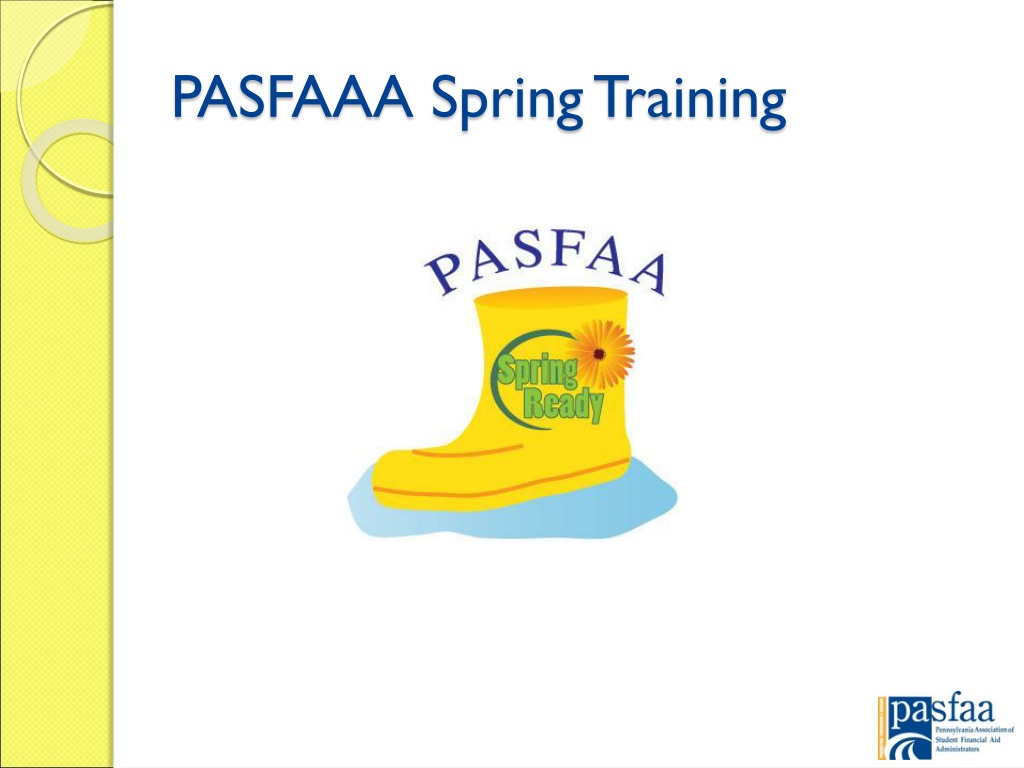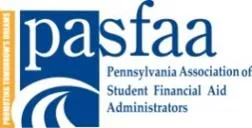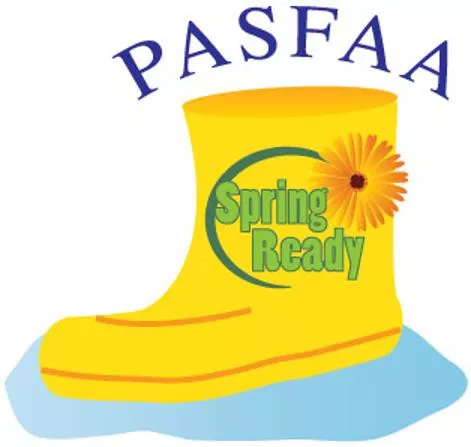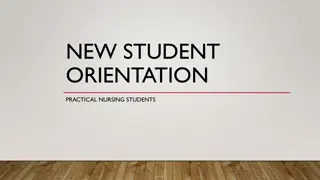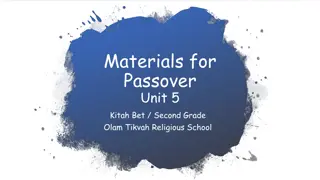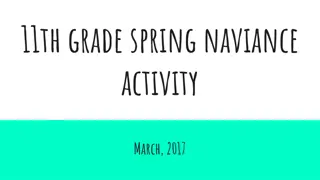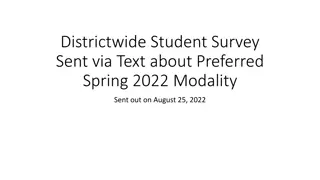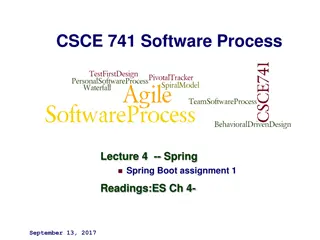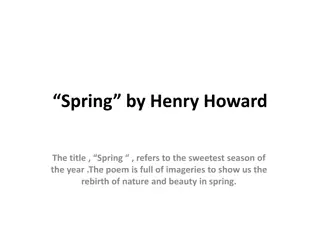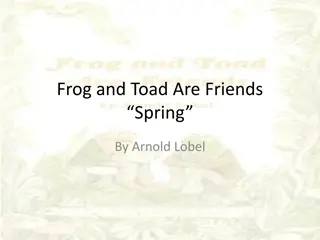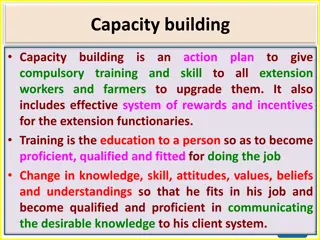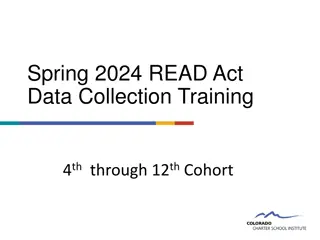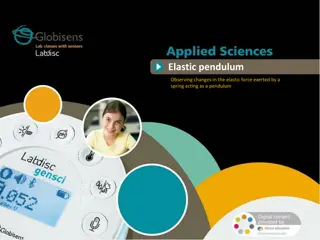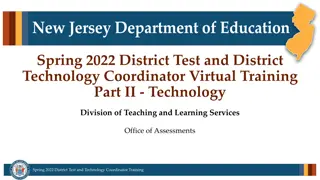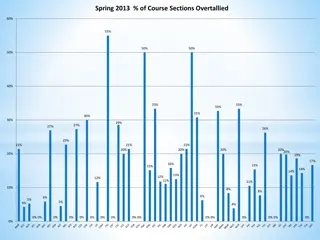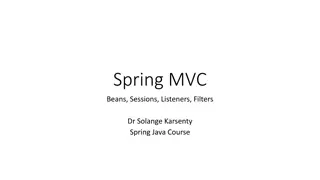PASFAAA Spring Training
Borrowers facing student loan repayment challenges can benefit from guidance on Income-Driven Repayment plans like Pay As You Earn, Income-Based Repayment, and Income-Contingent Repayment. This assistance helps them navigate repayment options to lower monthly payments and successfully manage their student loans. The Pay As You Earn Plan, introduced during the Obama administration, offers relief to eligible borrowers by providing additional flexibility in repayment. Learn about qualification criteria, eligibility requirements, and borrower examples to better support individuals in managing their student loan debt effectively.
Download Presentation

Please find below an Image/Link to download the presentation.
The content on the website is provided AS IS for your information and personal use only. It may not be sold, licensed, or shared on other websites without obtaining consent from the author.If you encounter any issues during the download, it is possible that the publisher has removed the file from their server.
You are allowed to download the files provided on this website for personal or commercial use, subject to the condition that they are used lawfully. All files are the property of their respective owners.
The content on the website is provided AS IS for your information and personal use only. It may not be sold, licensed, or shared on other websites without obtaining consent from the author.
E N D
Presentation Transcript
Counseling Borrowers on Pay as You Earn and Income-Driven Plans
Borrowers Have More Options We know many recent graduates are worried about repaying their student loans as our economy continues to recover, and now it s easier than ever for student borrowers to lower monthly payments and stay on track. U.S. Secretary of Education Arne Duncan
Objectives Learn about the newest repayment plan Pay As You Earn Discuss the Income-Based Repayment (IBR) and Income-Contingent Repayment (ICR) plans Review a comparison of Pay As You Earn, IBR, and ICR Discuss a borrower case-study Share ways you can counsel borrowers
Pay As You Earn Overview An initiative of the Obama administration Modeled after IBR plan Intended to provide additional relief for borrowers now Available as of December 21, 2012
Who Qualifies for Pay As You Earn? Direct loan borrowers: Stafford, Grad PLUS, or Direct Consolidation loans Perkins loans, if included in a Direct Consolidation loan Excludes: Parent PLUS loans Direct Consolidation loans that repaid a Parent PLUS loan Defaulted loans Alternative or private loans
Who Qualifies for Pay As You Earn? Must meet the definition of a new borrower: No outstanding DL or FFELP balance as of 10/1/2007, or no outstanding balance on the date a borrower receives a new loan after 10/1/07; and Receives a disbursement of a DL on/after 10/1/2011 Must receive a Direct Consolidation loan based on application received on/after 10/1/2011, unless it repays a DL or FFELP loan that was outstanding as of 10/1/2007
Eligible Borrower Example Kayla takes out her first loan on 8/28/2007 She gets a second loan on 8/28/2010 and a third loan on 10/28/2011 If Kayla pays off her 8/28/2007 loan today, is she eligible for Pay As You Earn? Eligible = No
Eligible Borrower Example Kyle takes out his first loan on 8/28/2007 He pays off that loan in 2009 He gets a second loan on 8/28/2010 and a third on 10/28/2011 Is Kyle eligible for Pay As You Earn? Eligible = Yes
Partial Financial Hardship Defined Borrower must demonstrate a partial financial hardship (PFH) PFH exists when the annual amount on the borrower s eligible loans exceed 10% of the difference between the borrower s AGI and 150% of the poverty guidelines based on borrower s family size Factors: Adjusted Gross Income (AGI) Poverty guidelines Family size Standard loan payment
Partial Financial Hardship Defined Filing status: Single or married filing separately Only the borrower s AGI Married filing jointly Borrower and spouse s AGI Borrower and spouse s loan debt
Determining Pay As You Earn Eligibility Family size = 1 $3,000 Monthly AGI $1,437 150% of poverty line $1,563 10% of $1,563 = $156 Standard payment = $288 Qualify = Yes
Pay As You Earn Terms Interest Subsidy If monthly payment amount is not enough to pay accrued interest Subsidized Stafford: ED will not charge the remaining interest for three consecutive years Interest subsidy eligibility period continues to elapse: During deferment/forbearance, except during periods of economic hardship deferment During periods when borrower doesn t qualify for subsidy If borrower switches from Pay As You Earn to IBR, or vice versa
Pay As You Earn Terms Interest Capitalization Interest capitalizes when a borrower: No longer has a PFH Limited to 10% of original principal at time borrower enters Pay As You Earn After 10% cap is reached, interest continues to accrue, but is not capitalized while the borrower remains on Pay As You Earn Leaves Pay As You Earn Does not submit income documentation
Pay As You Earn Terms Leaving the Plan Borrowers who leave Pay As You Earn may change to a different plan, however they can remain in Pay As You Earn even if they: No longer have a PFH Do not submit income documentation Payment reverts to the permanent- standard amount
Pay As You Earn Terms Loan Forgiveness Remaining balance forgiven after 20 years of qualifying repayment, including any: Payments made under Pay As You Earn or another income-driven plan Payments made under the standard repayment (or any other plan) that were not less than the standard plan Periods of economic hardship deferment Loan amount forgiven is taxable income
Pay As You Earn Who Benefits Most? Type of student who would benefit most from Pay As You Earn Direct loan borrowers who: Recently graduated or will soon Owe more than they earn annually Are pursing careers in public sector Are teachers with higher debt levels Are medical residents Are unemployed
Income-Based Repayment Plan
IBR Overview Introduced by the College Cost Reduction and Access Act (CCRAA) of 2009 Designed to help borrowers with unmanageable payments relative to income Available for borrowers on or after July 1, 2009
Who Qualifies for IBR Direct and FFELP loan borrowers: Stafford, Grad PLUS, or Federal Consolidation loans Perkins loans, if included in a FFELP or Direct Consolidation loan Excludes: Parent PLUS loans Direct Consolidation loans that repaid a Parent PLUS loan Defaulted loans Alternative or private loans
Partial Financial Hardship Defined Must demonstrate a partial financial hardship (PFH) PFH exists when the annual amount on the borrower s eligible loans exceed 15% of the difference between the borrower s AGI and 150% of the poverty guidelines based on borrower s family size Factors: Adjusted Gross Income (AGI) Poverty guidelines Family size Standard loan payment
Partial Financial Hardship Defined Filing status: Single or married filing separately Only the borrower s AGI Married filing jointly Borrower and spouse s AGI Borrower and spouse s loan debt
Determining IBR Eligibility Family size = 1 $3,000 Monthly AGI $1,437 150% of poverty line $1,563 15% of $1,563 = $235 Standard payment = $288 Qualify = Yes
IBR Terms Interest Subsidy If monthly payment amount is not enough to pay accrued interest Subsidized Stafford ED will not charge the remaining interest for three consecutive years Interest subsidy eligibility period continues to elapse: During deferment/forbearance, except during periods of economic hardship deferment During periods when borrower doesn t qualify for subsidy If borrower switches from IBR to Pay As You Earn, or vice versa
IBR Terms Interest Capitalization Interest capitalizes when a borrower: No longer has a PFH Leaves IBR Does not submit income documentation
IBR Terms Leaving the Plan Borrowers who request to leave IBR will have an expedited-standard repayment Can change to a different repayment plan after one month Can request a reduced-payment forbearance However, they can remain in IBR even if they: No longer have a PFH Do not submit income documentation Payment reverts to the permanent-standard amount
IBR Terms Loan Forgiveness Remaining balance forgiven after 25 years of qualifying repayment, including any: Payments made under IBR or another income-driven plan Payments made under the standard repayment (or any other plan) that were not less than the standard plan Periods of economic hardship deferment Loan amount forgiven is taxable income
IBR Who Benefits Most Type of student who would benefit most from IBR FFELP or Direct Loan borrowers who: Owe more than they earn annually Are pursuing careers in public sector Are teachers with higher debt levels Are medical residents Are unemployed
IBR Changes SAFRA/HCERA of 2010 will bring changes to Income-Based Repayment: Cap monthly payment to 10% of discretionary income (as opposed to 15%) Forgive remaining debt after 20 years of qualifying repayment (as opposed to 25 years) Effective for new Direct Loan borrowers on or after July 1, 2014
Income-Contingent Repayment Plan
ICR Overview Created in 1994 for Direct Loan borrowers Similar to IBR: Repayment term is 25 years Payments count towards Public Service Loan Forgiveness Loan forgiveness after 25 years
Who Qualifies for ICR Direct loan borrowers: Stafford, Grad PLUS, or Direct Consolidation loans (except a Direct Consolidation Loan that repaid a Parent PLUS loan prior to 7/1/06) Perkins loans, if included in a Direct Consolidation loan Excludes: Parent PLUS loans (unless included in a Direct Consolidation loan after 7/1/06) Defaulted loans Alternative or private loans
Determining ICR Payments Borrowers do not have to demonstrate a PFH Monthly payments are based on borrower s income, family size, and Direct loan debt Payments are the lesser of: 12-year standard repayment schedule multiplied by income percentage factor (payment based on loan debt and income) or 20% of discretionary income (payment based only on income)
ICR Terms Interest Capitalization Interest is capitalized during periods of negative amortization: Unpaid amount will capitalizes each year Interest capitalizes only until principal balance is 10% or greater than original principal from when borrower entered repayment Interest capitalizes at the end of deferment and forbearance
ICR Terms Loan Forgiveness Remaining balance forgiven after 25 years of qualifying repayment, including any: Payments made under ICR or another income-driven plan Payments made under the standard repayment (or any other plan) that were not less than the standard plan Periods of economic hardship deferment Loan amount forgiven is taxable income
ICR Who Benefits Most? Type of student who would benefit most from ICR Direct Loan borrowers who: May not be eligible for Pay As You Earn or IBR Are pursuing careers in public sector Are unemployed
Applying for Pay As You Earn, IBR, and ICR
Applying for Pay As You Earn, IBR, and ICR Electronic application available IBR/Pay As You Earn/ICR Repayment Plan Request form Uses IRS Data Retrieval Tool to collect tax information from the most recently completed two tax years Electronically transmits application to federal loan servicer Can be used for initial application or annual reevaluations Available at studentloans.gov Borrower may also apply at mygreatlakes.org or other federal servicer sites
Applying for Pay As You Earn, IBR, and ICR Borrower must submit income documentation May submit AGI documentation through: Electronic application Paper copy 1040, 1040A, or EZ Signed or unsigned (new) IRS Tax Return Transcript
Applying for Pay As You Earn, IBR, and ICR If AGI is not available or does not reflect current income, borrower can submit alternative documentation of income (ADOI) Borrower must provide documentation of all taxable income Example: pay stubs, unemployment benefits
Borrower Case Study Elena is a graphic designer who lives in Florida Single Family size 1 AGI $35,000 Federal loan debt $50,000 ($23,000 of which is subsidized), all of which has a 6.8% interest rate
Borrower Case Study Under ICR*: Initial monthly payment $397 Final monthly payment $535 Pay off her loans in 164 months (13 years, 8 months), and therefore receive no forgiveness Pay a total of $78,444 on her $50,000 loan debt compared to $69,037 under the 10-year Standard Repayment Plan *Assumes a 5% increase in Elena s income each year and a 3% annual increase in the poverty guidelines
Borrower Case Study Under IBR*: Initial monthly payment $228 Final monthly payment $575 Receive $653 in interest subsidy during the first three consecutive years of IBR repayment Payments are no longer based on income in her 16th year of IBR Pay off her loan at the beginning of her 21st year of IBR (therefore receive no loan forgiveness) *Assumes a 5% increase in Elena s income each year and a 3% annual increase in the poverty guidelines
Borrower Case Study Under IBR*: Pay a total of $101,673 on her $50,000 loan debt, compared to $69,037 under the 10-year Standard Repayment Plan *Assumes a 5% increase in Elena s income each year and a 3% annual increase in the poverty guidelines
Borrower Case Study Under Pay As You Earn*: Initial monthly payment $152 Final monthly payment $492 Receive $1,999 in interest subsidy, during all of the first three consecutive years of Pay As You Earn repayment Always have a payment that is based on her income *Assumes a 5% increase in Elena s income each year and a 3% annual increase in the poverty guidelines
Borrower Case Study Under Pay As You Earn*: Forgiveness amount $44,979 Total paid $70,709 on her $50,000 loan debt, compared to $69,037 under the 10-year Standard Repayment Plan *Assumes a 5% increase in Elena s income each year and a 3% annual increase in the poverty guidelines
Borrower Case Study Comparison of Elena s income-driven repayment options Pay As You Earn IBR ICR Initial payment Final payment Time in repayment Total paid Forgiven amount $152 $492 20 years $228 $575 20 years, 2 months $101,673 $0 $397 $535 13 years, 8 months $78,444 $0 $70,709 $44,979 *Assumes a 5% increase in Elena s income each year and a 3% annual increase in the poverty guidelines
